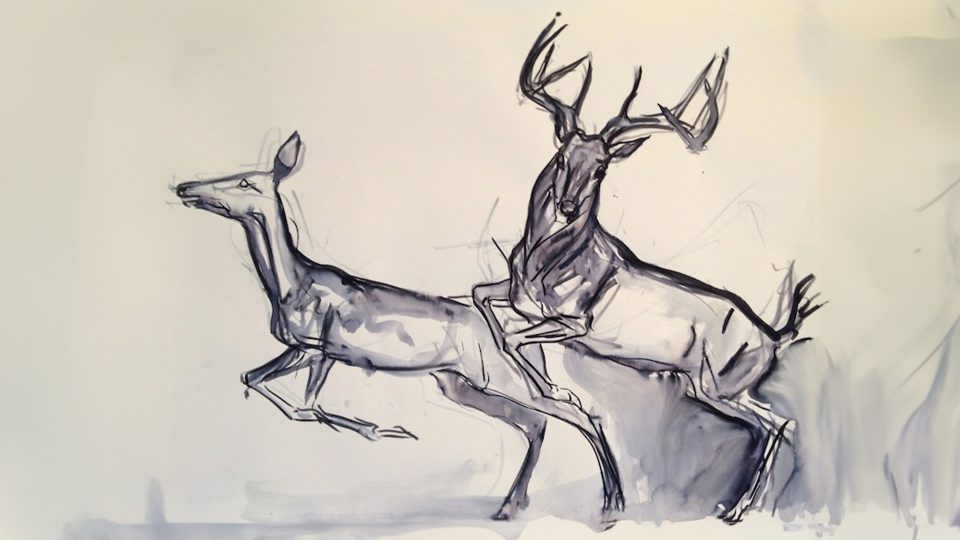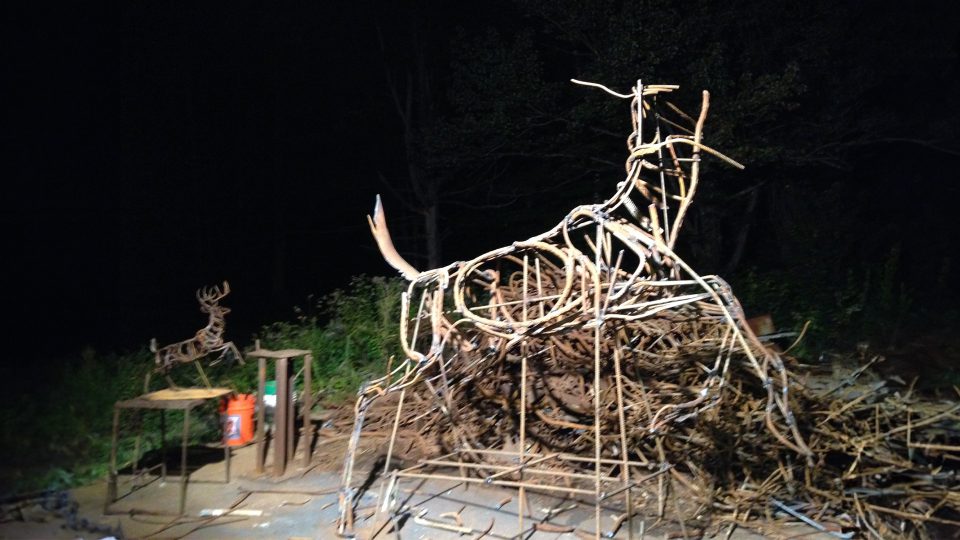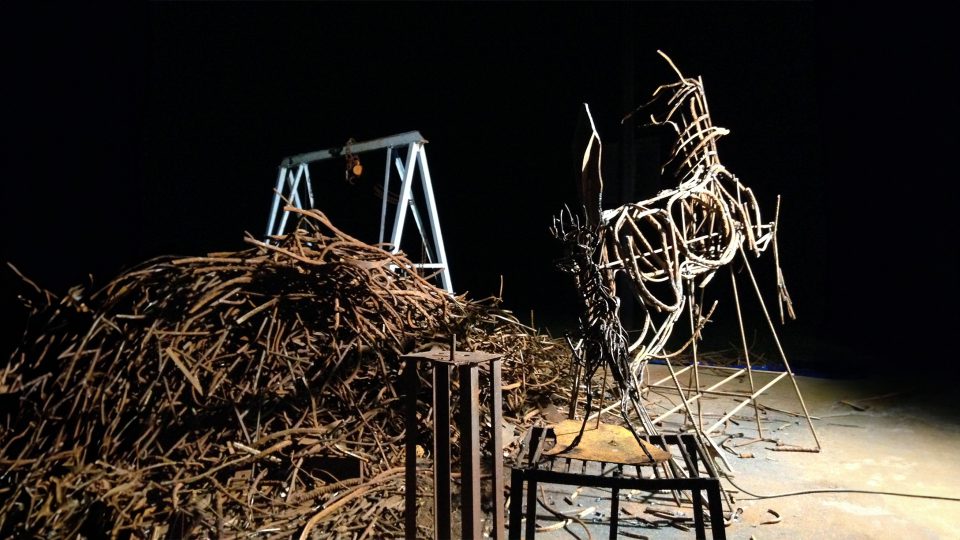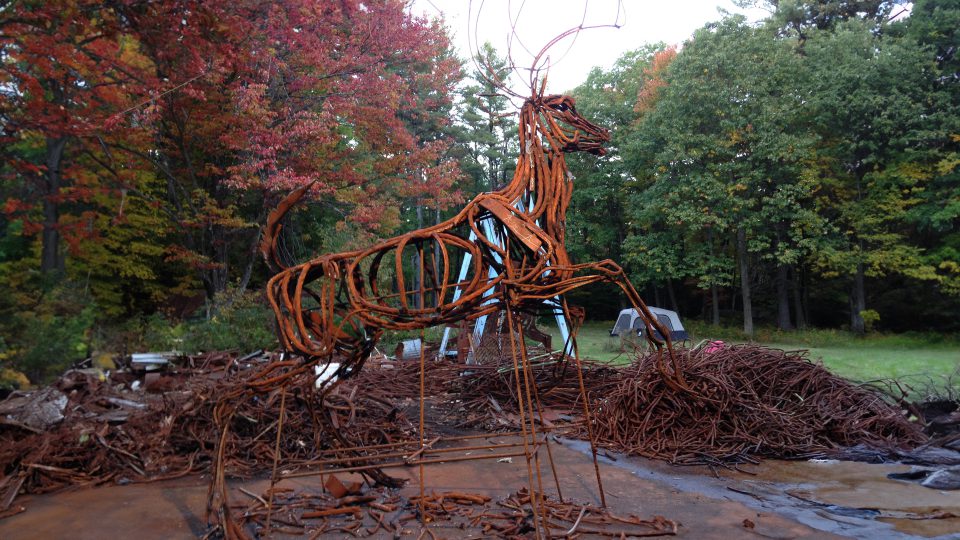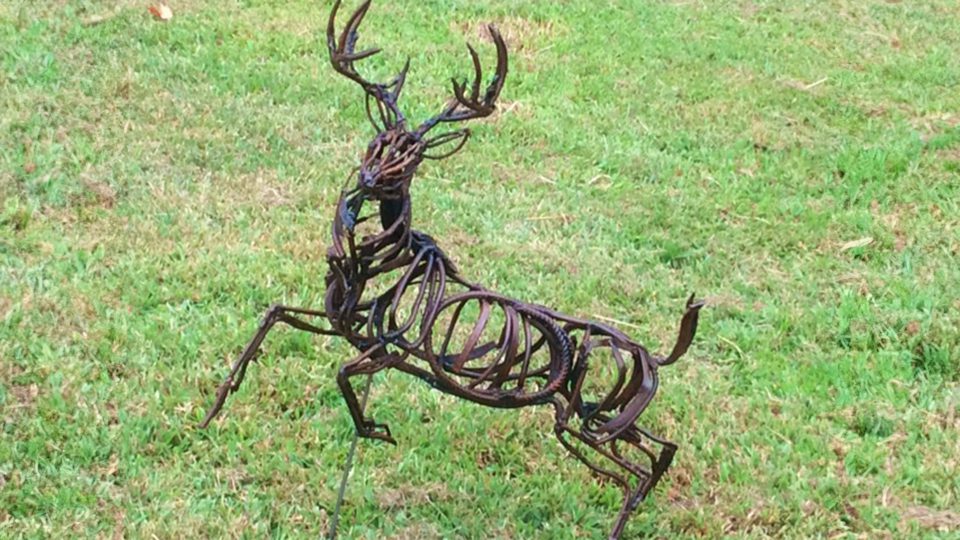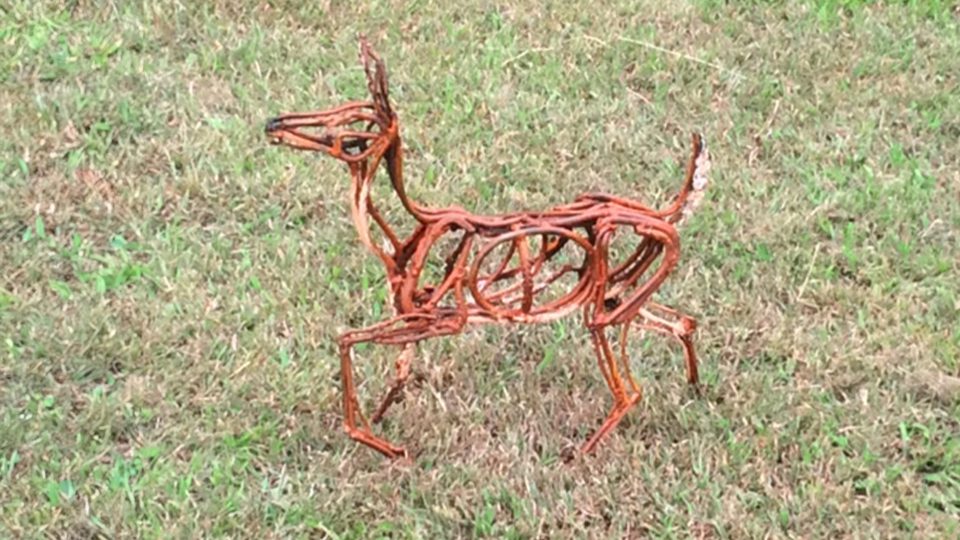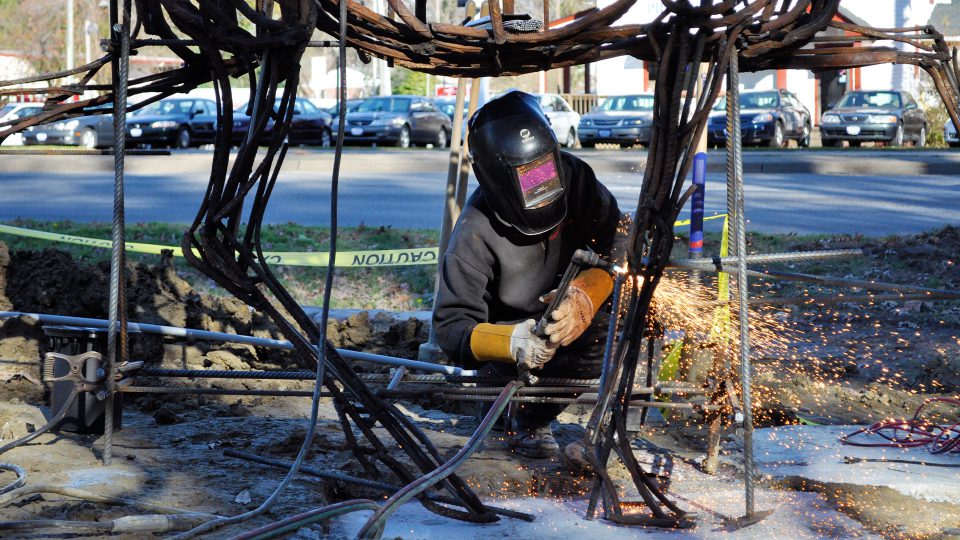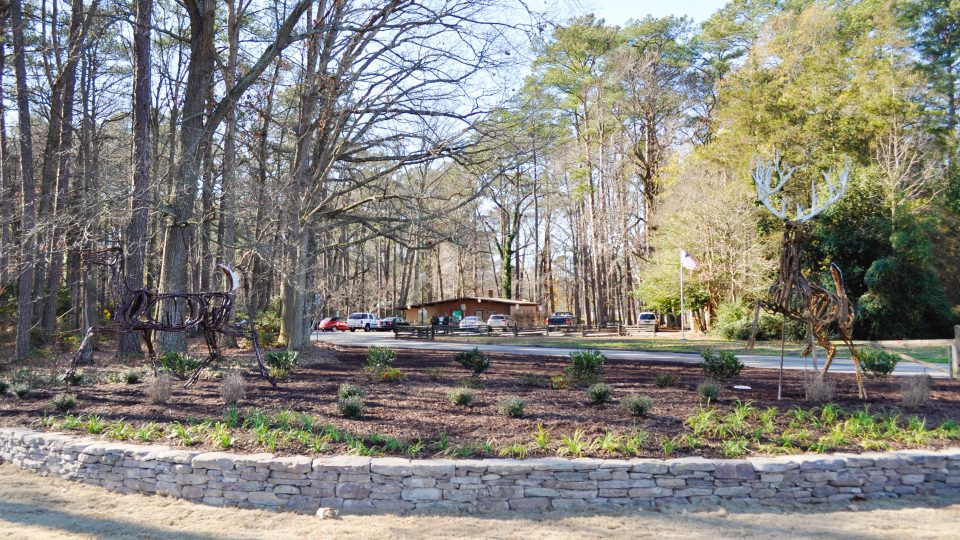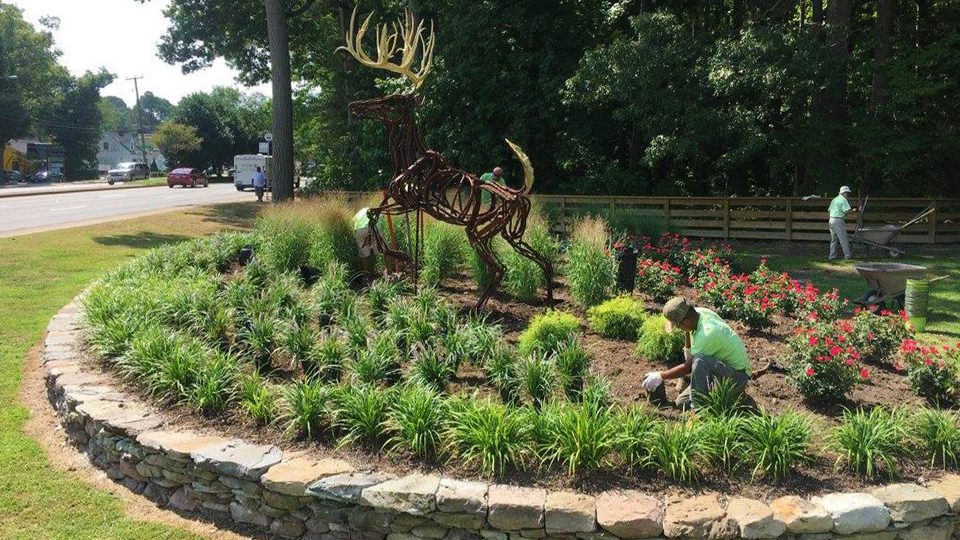Whitetail Crossing
WENDY KLEMPERER
This expressive installation, created from salvaged industrial materials, evokes elegance, agility, and the sheer force of nature – remarkable qualities of deer.
There is no better setting for these deer sculptures than welcoming the 400,000 visitors a year to Deer Park on Jefferson Avenue in Newport News, Virginia.
Abundant now, deer were severely threatened in the early 20th century. The animal that gave livelihood to Native Americans and colonists alike almost died out. Deer Park was established as a preserve and these sculptures are a permanent reminder of the creatures that once roamed this woodland setting.
This project exemplifies the partnership approach that is unusual among public art programs, but it is a Newport News trademark. The Newport News Department of Parks, Recreation & Tourism contributed and prepped the site, the Newport News Public Art Foundation commissioned and installed the art and stone retaining wall, business and foundation sponsors provided in-kind donations for portions of the installation, and patron donors contributed funds.
A free educational mobile app was launched alongside this installation — and rightly so, as it will greet the people who visit the park each year and the students next door at Deer Park Elementary School. A personal tour of the works of art in the collection of the Newport News Public Art Foundation is only a download away (Apple Store and Google Play Store). This was made possible in part by a grant from the Newport News Arts Commission.
ABOUT THE ARTIST
WENDY KLEMPERER
Sculptor Wendy Klemperer has always been fascinated with animals, and her work is informed by close study of her subjects’ bodies, behavior and habitats. But instead of the expected — a realistic replica of their anatomy — her work explores movement, how a body changes as it moves, how animals express themselves — and emotion — through motion.
“Sketching in air” is how she describes her boundary-crossing art, sculptures that are three-dimensional drawings. Instead of solid forms, she works with lines. She works primarily in metal, casting bronze and welding scraps of salvaged rebar and nails, washers and saw blades.
Like the wild animals they depict, Klemperer’s creations belong outdoors — in botanical gardens, parks, college campuses, sculpture parks, even city streets — where their relationship with the environment becomes part of what the art is about. Installed outdoors, she says, “The landscape fills in the sculpture, and the sculpture creates an event in the landscape.” Freed from the constraints of gallery walls, outdoor pieces can be big and have more impact.
The intersection of science and art is territory that draws Klemperer, and she comes to it naturally, with undergraduate degrees in biochemistry from Harvard and in fine art with a concentration in sculpture from Pratt Institute.
Klemperer’s website: www.wendyklemperer.com
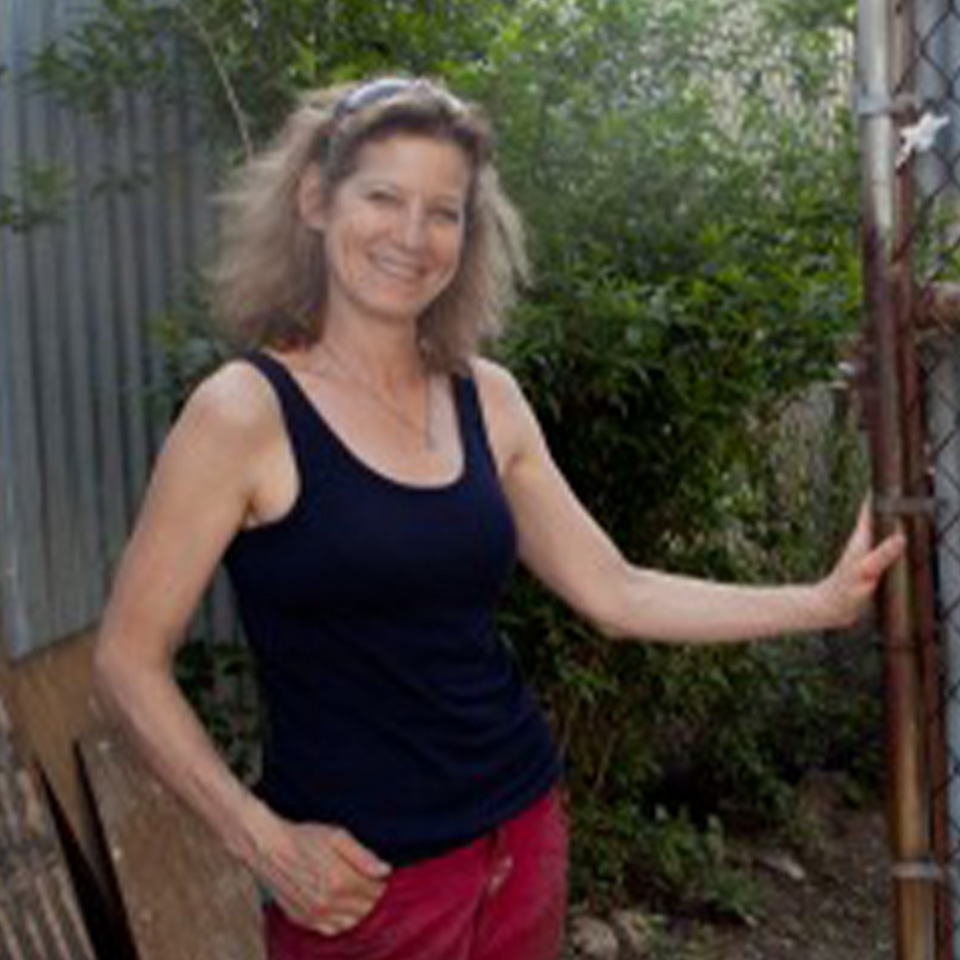
Artist: Wendy Klemperer
Details: Salvaged industrial materials. Created in New Hampshire and New York. Installed 2015.
Site: Entrance to Deer Park at 11523 Jefferson Avenue
Audio Tour
Hear artist Wendy Klemperer tell you about the piece.
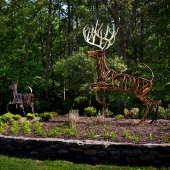
Hi, my name is Wendy Klemperer. I’m an artist living in Brooklyn, New York, and Nelson, New Hampshire.
So, you’re standing in front of my piece Whitetail Crossing at the entrance to Deer Park. I actually had been in conversation with the art foundation for quite a while about a piece and had already determined it would be, the subject matter would be deer. When they found the site of Deer Park, it worked particularly well because it turns out that in the early 1900s the park was used as a preserve for deer. It’s hard to believe, ‘cause deer are such a nuisance to many people now, but at the turn of the 20th century, whitetail deer were actually threatened and in danger of extinction. So my piece kind of commemorates the resurgence of the deer and celebrates the fact that an animal could come so close to disappearing and then go on to thrive in spite of and even because of mankind’s interventions.
The pieces are made of salvaged steel that I’ve welded together, and the buck has antlers that are also salvaged steel and then coated with a marine epoxy, a two-part epoxy, that gives them a bone-like, very antler-like quality and really adds to the visibility of the piece, with the white popping out against the dark woods.
I hope that when people come upon my piece, either driving or walking, I hope it takes them by surprise – almost the way coming upon wildlife startles you awake and thrills you. I hope the movement, the energy, the raw material can bring excitement and joy to somebody just happening upon this sculpture.

